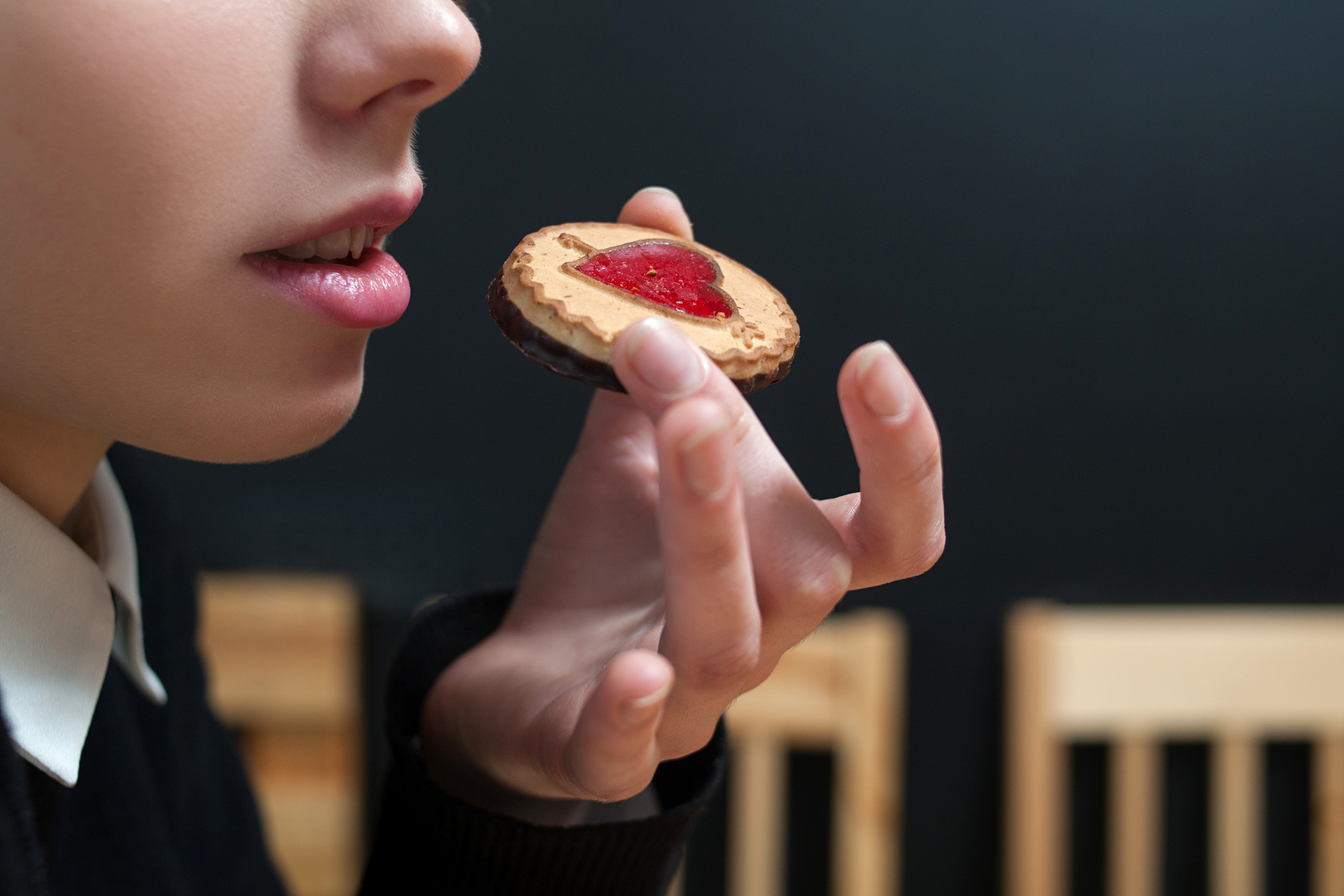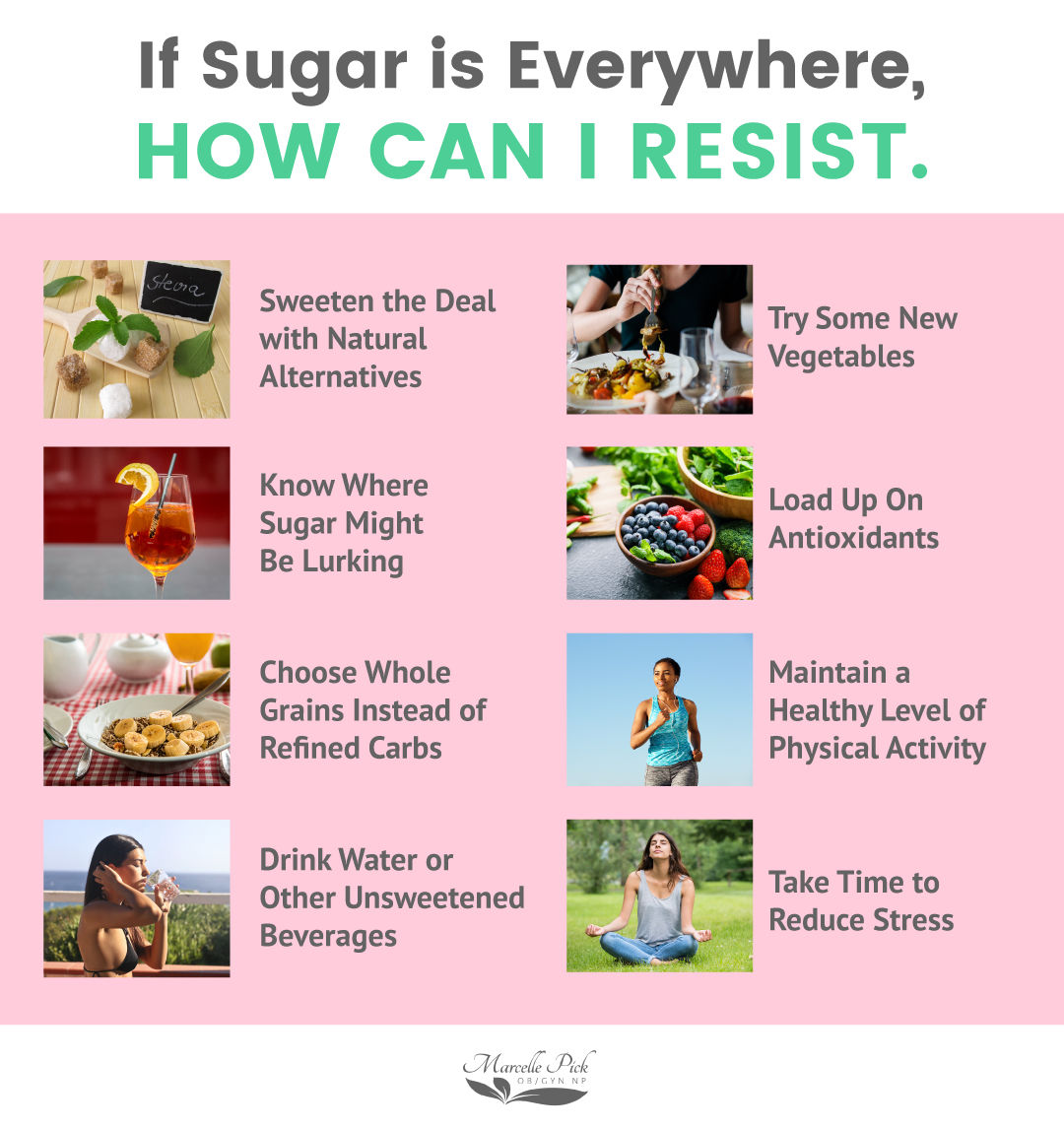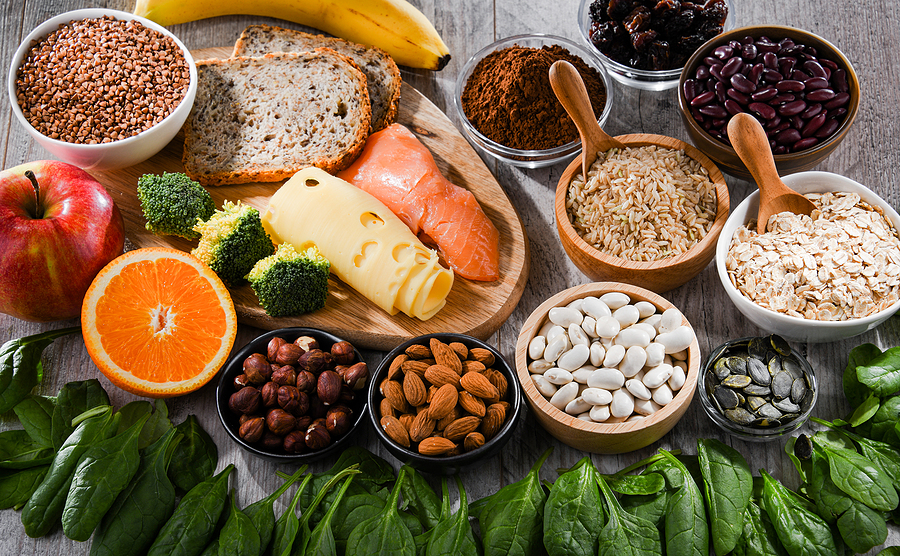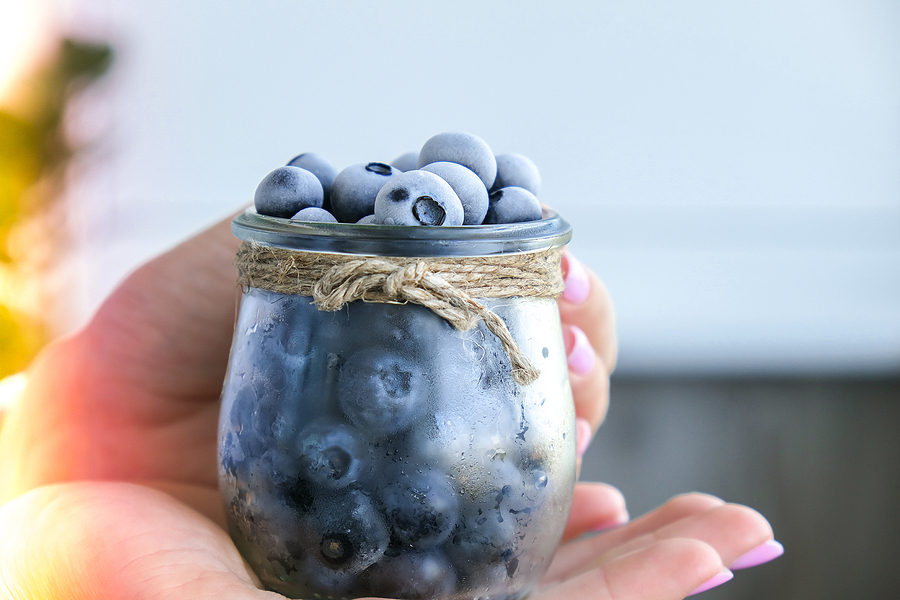In Greek mythology, Sirens used their enchanting voices and irresistible songs to lure passing sailors to their death along the rocky island coast. At the risk of sounding overly dramatic, I often feel as though sugar is doing the very same thing to far too many people. Though overindulging may not lead to death, there’s more and more evidence that overconsumption of sugar is behind the inflammation that is at the root of so many serious diseases.
In American culture, sugar is everywhere. We celebrate birthdays and weddings with cake, a beautiful summer day with a triple scoop ice cream cone, and even just the end of a good meal with a sweet dessert. We eat doughnuts and pastries for breakfast, and candy bars are advertised as the ideal energy boost mid-day. And it’s not just happy moments that sugar comes into play. When we suffer a setback, we turn to sugary treats for comfort.
To compound the issue, it’s not just these obvious treats that contain added sugar. So much of what we eat is processed rather than fresh, and most processed food is loaded with sugar to make it more appealing.
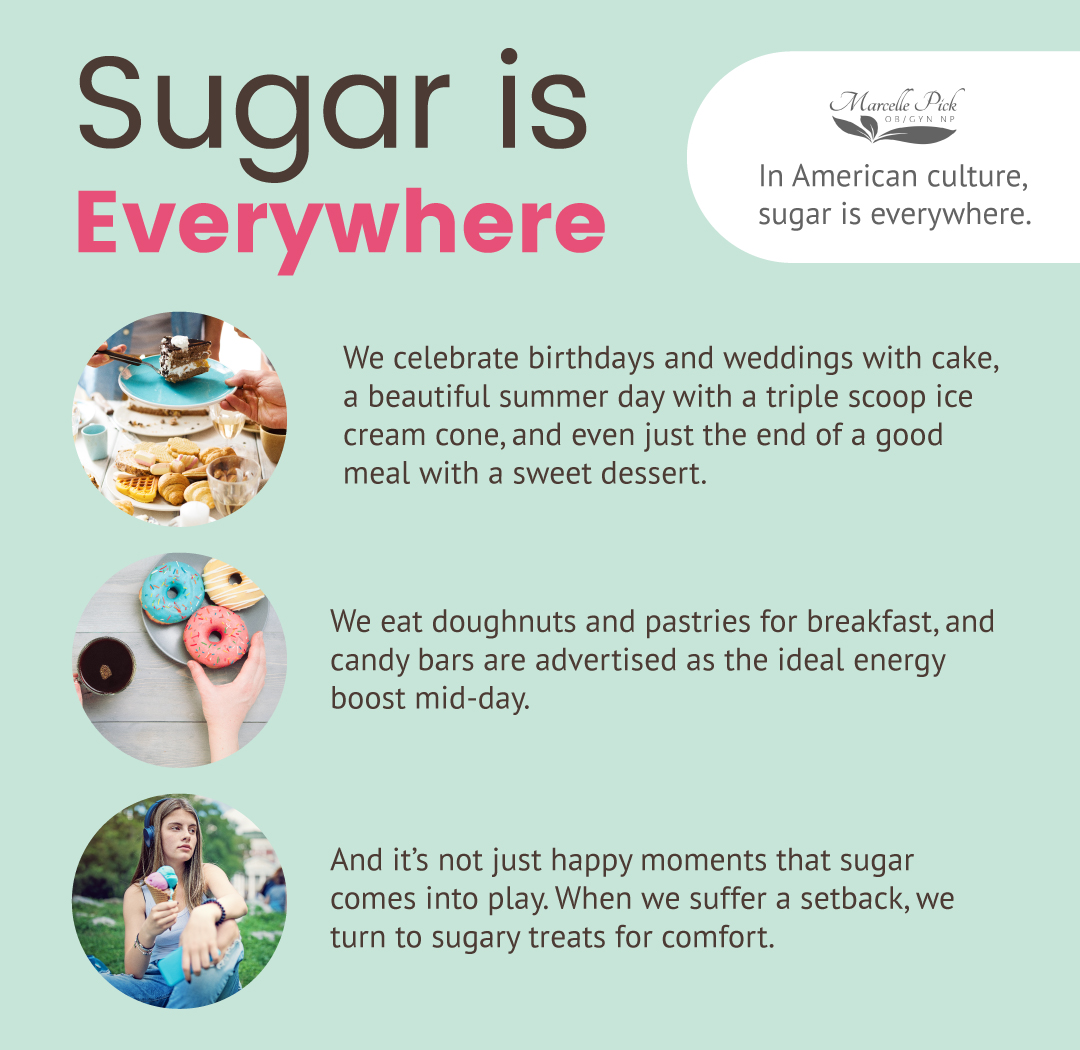
Why is Modern Sugar Consumption So High?
It’s hard to know exactly when this American love affair with sugar began, but it’s likely that faulty research in the 1960s played a role. That’s when fat became the number one “food villain” – thanks in large part to research sponsored by the sugar industry. That’s right, the sugar lobby paid researchers at Harvard to focus on the connection between naturally-occurring fats and heart disease. This research concluded that the only dietary invention needed to prevent heart disease was to reduce consumption of cholesterol and replace saturated fat with polyunsaturated fat. But we now know that’s simply not true.
Studies in the 50s and 60s suggested a connection between sugar and cardiovascular disease, but the bogus Harvard research diverted that attention to fat. Decades later, in 2014, researchers found a connection between overconsumption of added sugar and increased risk of death from cardiovascular disease.
With this new information, you would think that sugar consumption would have decreased. Unfortunately, not enough people even know about it! And even those who do have more than forty years of incorrect information to get past. All those children who grew up in the 60s and 70s are middle-aged adults now, who have only known this modern, processed, sugar-saturated dietary pattern.
Natural, Whole Foods Aren’t the Problem
The association between sugar and inflammation doesn’t hold true with naturally occurring sugar, like the kind found in fruit. It’s the added kind — designed to boost taste or prolong shelf life – that should be avoided.
This added sugar goes by many names. High-fructose corn syrup is one of the most commonly recognized. There’s been so much talk about it, that most people understand it’s not great for their health. But the others can sneak by: sucrose, fructose, glucose, dextrose, cane sugar, agave nectar, evaporated cane juice — the list seems never ending.
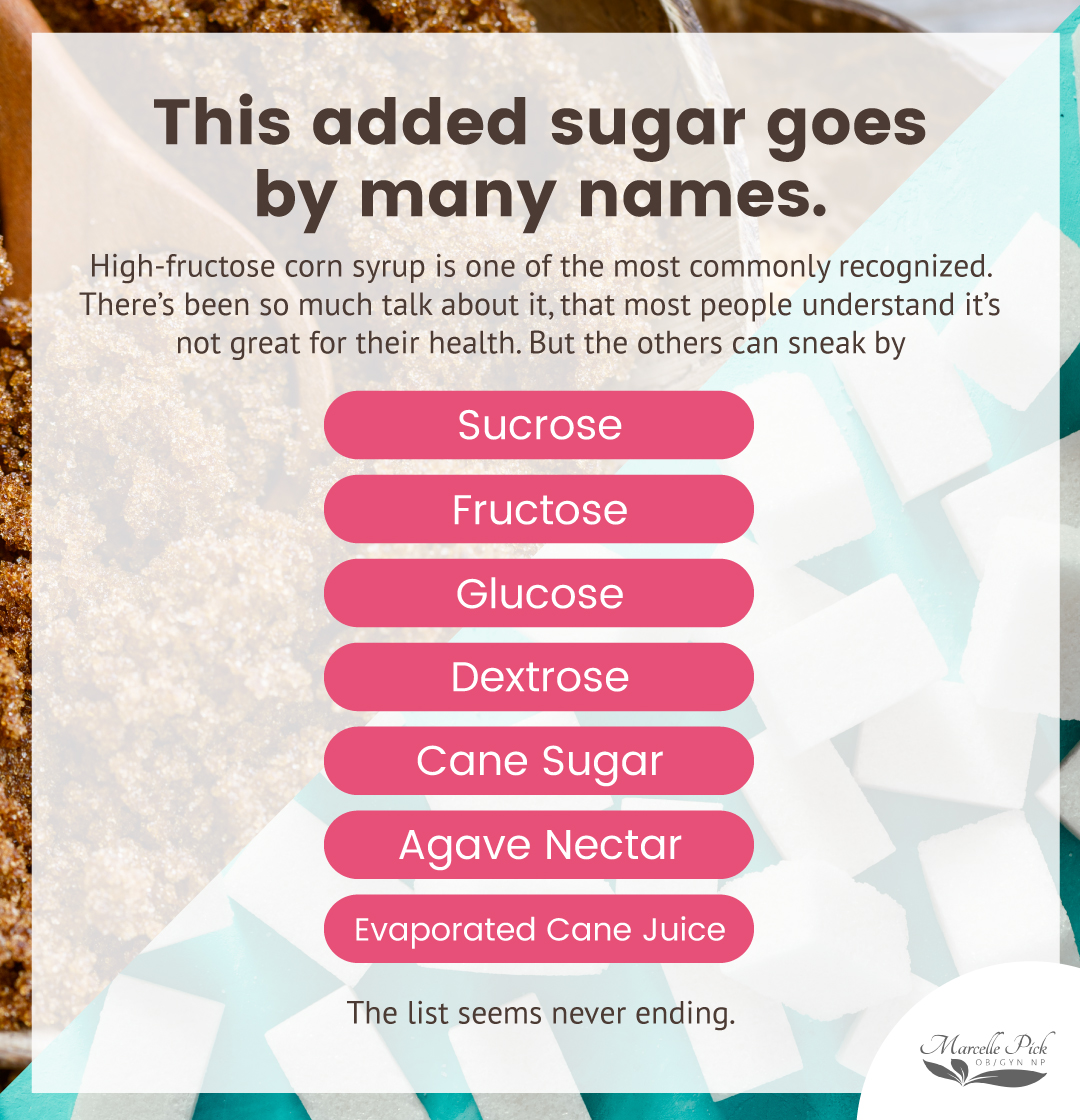
According to the American Heart Association, Americans take in about 22 teaspoons of added sugar per day, mostly from sugar-sweetened beverages, candy, cookies, and dairy products like ice cream, sweetened yogurt and sweetened milk. That’s more than three times their recommended amount for women, which is approximately 6 teaspoons. And it’s all this added sugar that’s been linked to inflammation.
Natural sugar is another story. Quite the opposite story, in fact. Fruits, vegetables and other foods containing natural sugar are considered anti-inflammatory.
Natural sugar is processed very differently by your body. Because natural sugar is consumed in whole foods, there’s a lot of fiber, protein and other nutrients alongside it, helping your body absorb natural sugar more slowly. This avoids the blood sugar spikes that added sugar creates.
And when you’re eating fruits, vegetables and whole grains you’re likely to feel the benefits in other ways too. A healthy diet, after all, is the best medicine we can take.
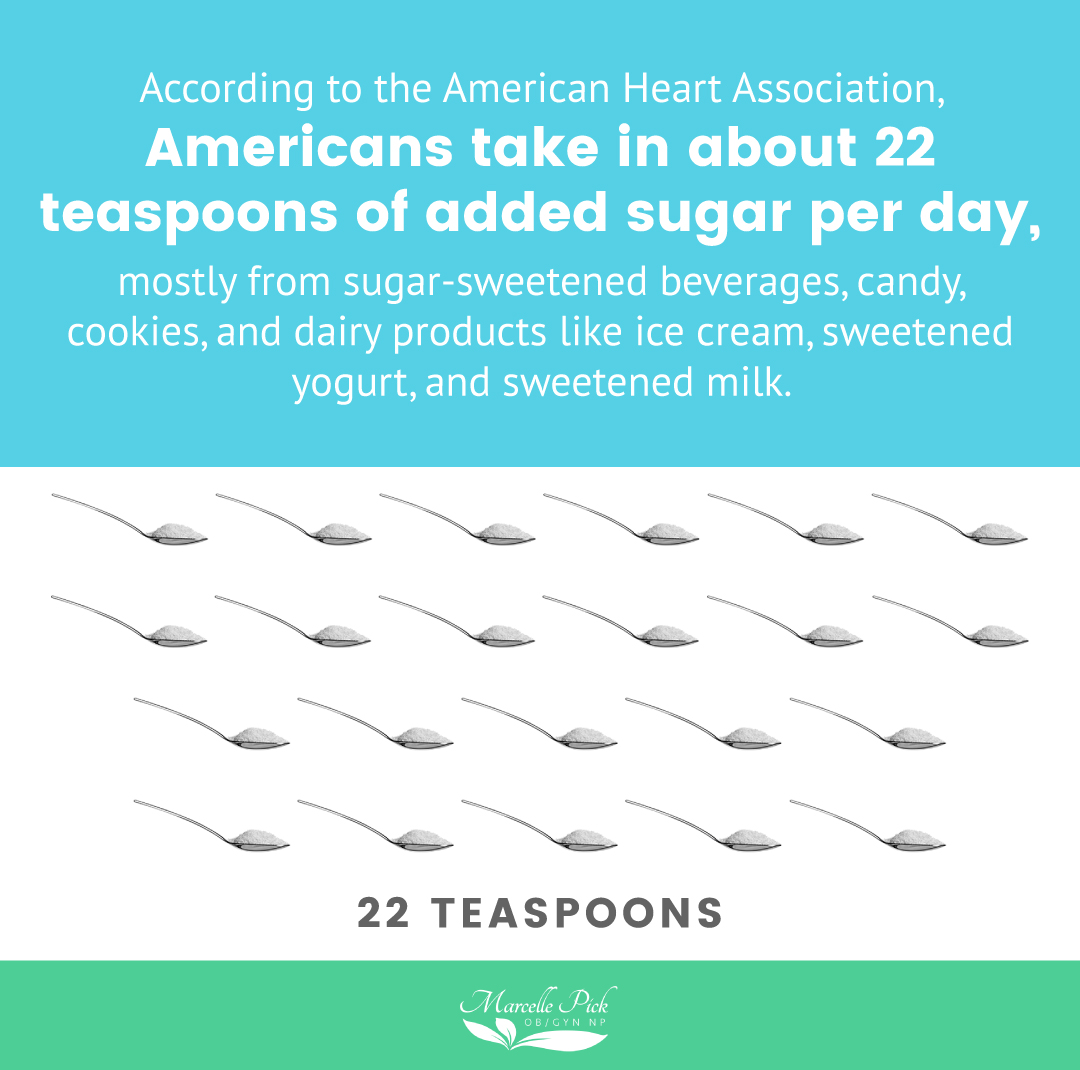
Hidden Sugar Could Be Your Downfall
So often I hear women tell me that they don’t eat sweet treats. “I am being careful,” they say. “I haven’t had a piece of pie or real ice cream in weeks. So sugar can’t be the reason I feel so lousy.”
What they fail to realize is that sugar isn’t always out in the open. We all know that most cookies, cakes and pastries are high in added sugar. We don’t dispute that soda is loaded with it. Many of us even realize that many of the prepackaged snacks we buy include sugar in their ingredient list. But how many people expect sugar to be in their store bought chicken broth? Or ketchup? Salad dressing? Bread?
The truth is that sugar is everywhere. It’s even in cigarettes (which is another great reason to kick that habit)!
Sugar and Inflammation – a Recipe for Poor Health
Just as those sailors had trouble resisting the sweet call of sirens, so many people have difficulty saying no to the sweet temptation of sugar. And just as following the song led to destruction of the sailor’s vessel, overconsumption of sugar can lead to the destruction of yours — your body.
The impact sugar has on your health comes in large part from chronic inflammation. Inflammation – the release of chemicals to help protect against injury and infection – isn’t a bad thing. In fact, it’s a natural, necessary healing response to unfamiliar organisms. But problems arise when too much inflammatory food is consumed, causing mild but chronic inflammation instead of a short term protective response. Prolonged low-grade inflammation can lead to allergies, diabetes, heart disease and other serious health concerns.
Studies on both animals and humans have shown that there is a link between added sugar and higher inflammatory markers in your body.
One small study found that glucose and high sensitivity C-reactive protein (hs-CRP) both increased after low to moderate consumption of beverages sweetened with sugar. CRP in the blood increases with inflammation.
Another study found that levels of uric acid, which can trigger inflammation and insulin resistance, increased upon daily intake of one sucrose-sweetened soft drink for six months, compared to consumption of milk, diet cola and water.
One more showed that consumption of 50-mg of fructose caused inflammatory markers like CRP to rise within 30 minutes, and stay high for more than two hours.
While these studies were small, and certainly more research is necessary to solidify the connection between sugar and inflammation, the most convincing study to me is that of the health of my patients. Nearly all of the women who hear me suggest they give up sugar protest. They bargain with me, sometimes even beg me not to take their sugar away. But when I convince them to try it for just a little while so they can heal, they’re often so amazed with the way they feel that they voluntarily continue to avoid sugar indefinitely.
So many of the signs of systemic inflammation, including fatigue, headaches, loss of appetite, irritability, swelling in joints, and muscle pain, subside so significantly that the connection is crystal clear to me – and to my patients who feel fantastic!
Why Sugar is as Irresistible as That Mythical Song
What is it about sugar that makes women sit in my office weeping at the thought of giving it up? The truth is, it’s not just one thing. First, there’s the chemical reaction within your body. Did you know that sugar lights up the reward center in your brain, making you feel like all is good in the world? When you do something that stimulates the release of the neurotransmitter dopamine – like eat a cookie, for instance – your brain gets the message that it’s something worth repeating. But each time you do it, the dopamine receptors get a little less sensitive, requiring more dopamine to respond. Your brain tells you you need more sugar, so you reach for another cookie. And another, and another…until the whole package is gone.
This is the same thing that creates addiction to other substances – and some studies in rats and mice have shown that sugar is even more addictive than cocaine or heroin! But sugar is sneakier than narcotics. The impacts can be far more subtle in the beginning, and you may not even notice how lousy sugar makes you feel until you’re 100% hooked. And just like some people become addicted to drugs with their very first experience, there’s a small percentage of people who can’t have any sugar at all without triggering an addiction.
Not only does sugar create a release of dopamine, but other “feel good” neurotransmitters like serotonin and endorphins are let go, creating bursts of energy or a sense of inner calm. And when you combine sugar with lack of sleep or excess stress, your cravings can intensify even more!
Finally, there’s the emotional side. Sweet treats can feel like the only bright spot in a very difficult life. Maybe they remind you of celebrations you wish you could experience again. Maybe cookies and milk were part of an after school ritual that made you feel heard and connected to someone who loved you as a child. If you feel like a little something sweet is the only joy in your life, it’s no wonder it’s tough to give up.
If Sugar is Everywhere, How Can I Resist?
I’m not going to say that kicking the sugar habit will be easy. Most people have been consuming way too much added sugar – intentionally or not – for decades. You didn’t build the habit overnight, so it’s not realistic to think you’ll break it in a day. My best advice is to take it one day at a time, start with whatever baby steps you can manage, and don’t beat yourself up if you slip. Even eating half the sugar you used to is a good start. And once you begin, you’ll feel so great you might just be ready to go all in. Here are a few tips to help you wean off sugar and reduce inflammation:
Satisfy Your Sweet Tooth Naturally
Keep a bowl of fresh fruit on the counter, or a bag of frozen berries in your freezer. When that sweet call comes, go ahead and give in — but choose whole foods instead of processed. Have you ever tasted perfectly ripe melon? It’s more sweetly satisfying than a cookie, and won’t make you feel lousy when you indulge.
Sweeten the Deal with Natural Alternatives
If you just can’t resist the call of ice cream or cake, try using an artificial sweetener with natural roots. Xylitol, a naturally occuring sugar alcohol, has the same amount of sweetness as sugar, but less than half the calories – and it doesn’t raise blood sugar levels. Stevia, derived from a South American plant, Stevia rebaudiana, is calorie-free, and far sweeter than sugar. Both are far better for your health than added sugars or other artificial sweeteners.
Know Where Sugar Might Be Lurking
Processed foods and drinks very often have added sugar. Reading labels is the best way to know what you are consuming, and I always advise patients to become familiar with the words they’ll find there. If you see sucrose, glucose, high-fructose corn syrup, or any of the other names sugar uses, steer clear.
Choose Whole Grains Instead of Refined Carbs
Refined carbohydrates – like white rice, white bread, and pasta – cause blood sugar spikes and offer little in the way of real nutrition. When you choose to eat carbohydrates, do so wisely with whole grains. Oats, brown rice, quinoa and barley are all good choices, with plenty of fiber and antioxidants to fight inflammation and stabilize blood sugar.
Drink Water or Other Unsweetened Beverages
One of the largest sources of added sugar in American diets doesn’t even come in food. Hydration is essential to feeling your best, but drinks loaded with sugar work against you, causing both blood sugar and inflammation to increase. Water is the best choice for staying hydrated, but if you want variety, try infusing it with fruit, or select unsweetened coffee or tea (either hot or iced) .
Try Some New Vegetables
You probably already know that fruit is sweet, but did you know that many root vegetables have a surprisingly sweet taste, especially when cooked? Don’t be afraid to veer off your usual path, and add sweet potatoes, winter squash, carrots or beets to your favorite dinner recipe. Packed with vitamins and minerals, these vegetables can help ward off and reduce inflammation throughout your body.
Load Up On Antioxidants
Foods rich in antioxidants, like nuts, seeds, oily fish, olives and olive oil, and avocados, naturally thwart inflammation. And they add great flavor to salads and other meals!
Maintain a Healthy Level of Physical Activity
Exercise can boost those “feel-good” hormones without the blood sugar spikes. And if you’re out taking a walk, working out at a dojo, or on the dance floor you’re less likely to be reaching for a sugar filled treat.
Take Time to Reduce Stress
Chronically high levels of stress set off a chain reaction, increasing inflammation – and, often, sugar cravings. Make time to stop and breathe every day, then find other techniques that work for you to manage your stress.
You Can Resist the Siren’s Song
Habits are hard to change, but understanding the association between sugar and inflammation may make resisting temptation a little bit easier. When the song is over, all that remains is the destruction it causes. And painful joints, excessive fatigue, headaches, irritability and all the other symptoms inflammation can create simply aren’t worth the momentary pleasure a sweet treat offers. Start slowly — maybe cutting your sugary beverage consumption in half – and really notice how your body feels. Trust me, you’ll notice the difference!
References:
https://www.healthline.com/nutrition/sugar-and-inflammation
https://draxe.com/what-sugar-does-to-your-brain/
https://draxe.com/is-sugar-bad-for-you/
https://www.healthline.com/nutrition/xylitol-101
https://www.healthline.com/health/food-nutrition/xylitol-stevia-comparison#1


